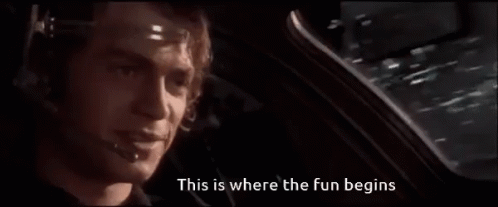Text
Week 6!
Welcome back to another week of audience studies folks!
This week we are going to be looking into the uses and gratifications of media and the different ways that audiences use media and why they might be using that specific media. So we can think about it this way to start; what do you grab when you want to relax? Is it Netflix or a book or YouTube maybe? Personally and for lots of people around me, Netflix and watching television shows is the go-to media when we want to relax this is also more accurate for streaming services rather than watching on TV.

But this can change from what you are looking to get out of it, for example, some people might use Twitter as a place to get their news content and some might use it as a way to interact with people who watch the same shows as you. Basically audiences use and satisfy specific needs by using specific media platforms.
The uses and gratification approach reimagines the idea of audience as objects and looks at audiences as agents who actively choose specific media channels and content that they can use to satisfy needs and a particular moment. As Sullivan discusses the uses and gratification theory takes on similar ideas of the functional perspective of audience activity, which is understanding why people do what they do. These theories see ‘audiences as rationale and whose actions can be understood through social context and there are five basic assumptions to the approach (Sullivan, pg.113, 2013).
So without understanding audiences in these 5 elements, the uses and gratification theory might not be all that accurate:
The audience is considered active and the use of media is with a particular goal of the individual in mind
The audience member takes the lead in linking a specific media choice to satisfy a specific gratification
Mass media compete with other sources of need satisfaction – there are different platforms an audience could go to for one thing
Audience members are aware of their individual needs and are able to select accordingly
Scholars try to understand the audiences’ orientation to certain media “on their own terms”

For example, if I’ve had a long day (which let’s be honest has been most of my days this year) I have the need to relax and usually my go to media platform would be Netflix, I’m actively choosing the media platform with a particular goal (to relax) in mind and I’ve linked Netflix to the idea of being able to relax.

[not saying this is an accurate representation of me, but it totally is]
However, there are also multiple other mass media platforms that I could use to relax because when I have something on Netflix I usually scroll through Twitter or Instagram as well. The theory also suggests that we are aware of what we want and will seek media accordingly so depending on what I’m feeling in that specific moment what I watch might differ.
Sundar and Limperos (2013) suggested that because of the advancements in technology and new affordances it encourages users to new needs and they can seek gratification through multiple media experiences (Sundar & Limperos, 2013, p.521). For me, if I’m tired I don’t necessarily want to be watching something that will need me to pay a lot of attention, I wouldn’t really want my brain working at full speed trying to figure out conspiracy theories or plot twists. Like Professor Good discussed in lecture this week, media is seen as a functional form, gratifications are sought out by the individual and can be obtained or maybe even not (Professor Good, week 6, Oct 10th).

Katz, Gurevitch, and Haas (1973) organized needs into five specific groups:
(1) Netflix is fulfilling the affective need “strengthening aesthetic, pleasurable, and emotional experience” (Sullivan, pg114). I’d say I get emotional fulfillment by watching certain shows whether that’s watching This Is Us and crying with the characters or watching The Office and laughing alongside the characters I use the show to get something out of it. Similarly, I’ve found that in some cases it doesn’t even have to be good content for audiences to get some sort of emotional fulfillment from; soap operas go on for what seems like 100s of seasons and yet still maintain a fan base because for its audiences it’s an emotional experience that they are connected to. Media like Netflix can be instrumental where there is going to specific content that an audience can look forward to viewing while they’re on it or it can be structural where you are simply having it play in the background while you’re studying.
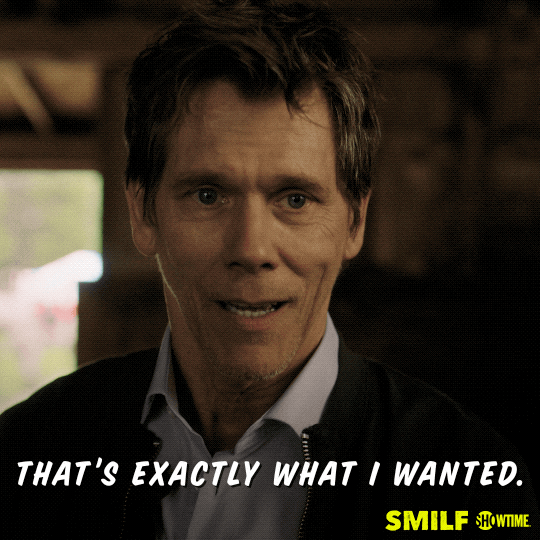
(2) Netflix is also an oh so great platform to satisfy cognitive needs as well “strengthening information, knowledge, and understanding” (Sullivan, 2013, pg114) because as someone who watches a lot of documentaries it has helped me gain knowledge and information on a variety of topics. Documentaries on Netflix like Blackfish, Chasing Coral, Planet Earth etc. all left me more informed and conscious about the planet and its species and it fulfilled my need ‘mental and intellectual needs.’

(3) Integrative needs “strengthening credibility, confidence, stability, and status’ (Sullivan, 2013, pg114). Audiences often look for ways to establish their status and credibility in situations where they feel like they need it and they go to specific media platforms in order to accomplish this. For example, people might watch or use specific media because they want to fit in with a group of people that also use it

(4) Social needs “strengthening contact with family, friends, and the world” (Sullivan, 2013, pg114) this is the use of media platforms as a way to socialize with family and friends. Facebook for right now is mainly used for extended family, I don’t post anything personally but it is a good way to keep in contact with extended aunts and uncles that you might not see as often. Usually audiences would want to scroll through social media with the idea that they will see posts from their family and friends. Media content like this is also ritualized because you are using this content alongside your family and friends, and you’re going to be expecting certain content while using it, but social media is also relational as it brings people and communities together.
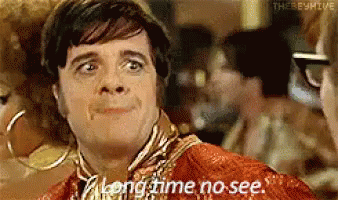
0 notes
Text
Week 7!
Oh boy! There’s so much to talk about this week!
We’re going to be starting of with encoding and decoding media texts and this can be looked at like a game of telephone, the message can start off one way with one intended meaning in mind but once it gets to the last person it can come out totally different. Stuart Hall goes on to look into encoding and decoding and called it the two “determining moments in any communication exchange” (Sullivan, pg. 140).
He describes encoding as the message that a media producer places in a way that is meaningful to an audience and the structure of how its being presented, this can be the words, signs or images or even things like body language, facial expressions, and decoding is the reception and interpretation of the message by the audience. Hall says the way an audience member can decode a message is both a creative and social practice – creative because “audiences are able to bring out their own resources to decode the message” and social because “the audience is also informed by larger structures like language, community norms, and cultural conventions” (Sullivan, pg. 140). Sorry for the long description but I think it was needed.
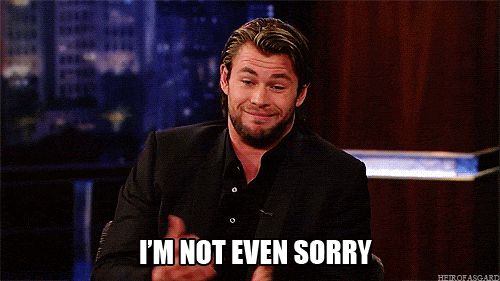
It’s easy to understand the concept of encoding and decoding by looking at different groups people, I know for me that the way that I might decode a message might be different to the way some of my friends might decode it. But also the way that individuals encode a message has an affect on how other decode it. For example, the other night I came home really tired and I wasn’t in the mood to talk to anyone and I told one of my roommates that “I don’t really want to talk right now” and I meant that generally with anyone but the way that she decoded it was that I didn’t want to have a conversation with her specifically and she thought that she had done something to upset me which was so not the case.
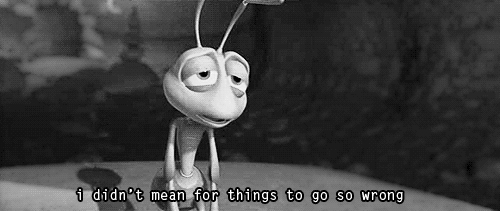
Similarly, in relation to media contexts some new stories, advertisements, TV shows can be made with an anticipated meaning in mind but the media producers don’t have much of a say in the ways that its audience decoded the message. Media texts are polysemic which means that its capable of being translated differently by different viewers because each person looks at it with their own experiences and cultural knowledge of signs (Sullivan, pg. 142).
I was talking to this guy who is a straight, white, middle class, male (the description is necessary) about the show Brooklyn Nine-Nine and he said he didn’t like it because he felt like different opinions were being pushed onto him using the show. The show is essentially a comedy but they have story lines for important topics for LGBTQ characters, people of colour, etc., and my friend felt like it took away from the comedy when they told these storylines. But for someone in the minority groups we decode it as a way that we are being represented in the media but for him as a straight, white, male he has never felt like he wasn’t being represented and so he decoded the message in a different way.

This week in lecture Professor Good discussed how we can look at the different ways that audience interpret and decode violence that is seen in the media like the television show Dexter. Granelli and Zenor’s 2016 article on ‘Reception Theory and Moral Judgment of Dexter’ wanted to see how audiences read the violence in the show, why were such shows so popular, how do the audiences engage with such morally complex characters. The article mentions 4 different types of audience reception argued by Carolyn Michelle – [hold on, this part gets a little technical for a bit]
Transparent: this is the mode where the audiences read the “text as life”, where the audience member essentially gets lost in the world of the media text and has strong emotions towards the characters and themes. (Michelle, 2009, p. 141).
Referential: where the audience reads the “text as like life”, Michelle says that audience moves outside of the text and compares it to his/her own life. (Michelle, 2009, p. 141).
Mediated: where the individual reads the “text as production”, it’s the audiences decoding the text “based upon its aesthetics and their own media production literacy meaning that they are less likely to engage with the themes and messages of the text” (Michelle, 2009, p. 141).
Discursive: “text as a message” audiences analyze the meaning of the text but takes on their own ideological position on the message. (Michelle, 2009, p. 141).

With shows like Dexter where the content might be morally questionable I think it is important for people to understand the difference between the dominant-hegemonic position, the negotiated position, and the oppositional.
A dominant-hegemonic position is when the audience member accepts the media exactly the way that it’s being presented; this is understanding Dexter’s character just as the way that it’s being presented to you and that he is a character from a show.
A negotiated position says that the audience member would interpret the message with a “mixture of adaptive and oppositional elements; audiences would be able to see what Dexter is doing from his point of view because he believes what he’s doing is right but also understands that its morally wrong.
Finally, the oppositional position is when its viewers will take a media text and decode the message in a “globally contrary way”; most individuals understand that killing people even if they’re bad people is wrong [I mean at least I hope] so completely agreeing and supporting what Dexter does might be seen as an oppositional view.

0 notes
Text
Week 8!
This week’s chapter began with “stop for a moment and think about your everyday morning routine” – so I did, think about yours too! I usually set my alarm 15 minutes earlier than when I actually should get out of bed and I usually scroll through social media for a little bit and answer any messages or Snapchats that I got through the night and then I go make some coffee before I get ready for the day. It takes me around an hour to get ready in the morning and in that hour I would say I spend around 20-25 minutes on my phone, which goes to show how ingrained the media is in our everyday life.

This chapter of the text book looks closely at Media Reception which is “the study of audience interpretation of media that occurs in specific contexts, the understanding is that an audiences’ use of media happens at specific times and in specific physical spaces (Sullivan, 2013, p.162).
Our textbook looks at the three contexts in which media is consumed (1) spatial, (2) social, and (3) time. The spatial context of media consumption is understood as the concrete, physical dimensions of the location (Sullivan, 2013, p.163).
The experience that you have as an audience can really vary depending on where you are watching whatever you are watching. I could be at home with my family watching Lord of the Rings [for like the 100th time because the whole family is obsessed], or I could be watching it alone. The experience that I have when watching with my family in comparison to watching it by myself is a lot different and the experience of watching it on a big screen TV at home versus my laptop at my university house is definitely not the same.

The social context as Sullivan describes in closely linked with the spatial context; “reception spaces are partially defined by the people and relationships that are found there” (Sullivan, 2013, p.163). Going back to the LOTR and my family the difference of watching it at home versus at university isn’t just the difference of location but also the people that come with those locations. I love my roommates but watching LOTR with them isn’t quite the same as watching it with my family.
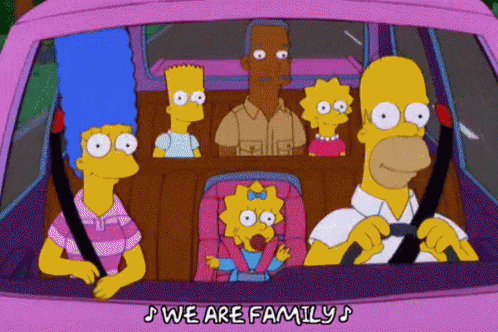
The last and final context is time which can be our daily schedules/routines and then there’s also the concept of punctuation where we “use media to structure our day into discrete time segments” (Sullivan, 2013, p.165). This was the understanding that people structured their daily activities to fit into the schedules of certain shows that would only air at specific times sort of like when you were little and would want to wake up early on Saturday morning to catch all your fav cartoons. However, like Sullivan writes with the advancements in technology and digital services like Netflix or other streaming services the time context might not have a huge impact of an individuals’ media habits. Though, when I think about watching LOTR with my family we are restricted in the time context because we’re all in different countries so that means we structure the time that we’re together in order to fit in a whole day’s worth of Lord of the Rings.

Also this week in lecture Professor Good asked us to think about our personal reception context in relation to appropriation, context, and conversion. Appropriation as she discussed is the ways in which communication technologies have been acquired (Professor Good, week 8, Oct 31st). For example, my first memory of getting our family computer was a pretty big deal. We had one of those really old beige box computer but then we exchanged it for one of the newer Windows PCs, I remember my dad bringing out the box from the car and the CPU was in another box and I also remember it being way more complicated to start up than it is now.
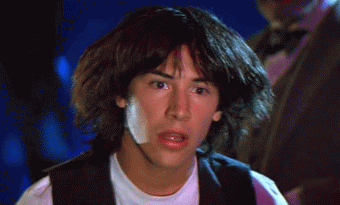
The context “refers to both a place and web of interpersonal relationships and interactions that occur within that space (Sullivan, 2013, p163). There’s the objectification, which is the physical layout and incorporation which is how they’re used in the household (Professor Good, week 8, Oct 31st). Back then we had our computer room so that was the physical layout and location of it; and for incorporation I used the computer a lot for playing games, or when my brother and I would fight over who got to use it next because we only had one
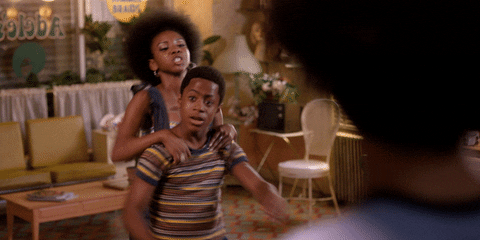
The last reception context that was discussed in class is conversion “when information is carried via communication technology becomes part of everyday social interaction and builds social capital outside the home” (Professor Good, week 8, Oct 31st). As technology has advanced and its has gone from having a computer only at home to having a computer basically in your pocket the entire day, we incorporated the communication technology into our everyday lives.
Sullivan writes that “television continues to be the most important and widely used media technology in the domestic context” (Sullivan, 2013, p.171). Televisions can also be a very personal aspect of someone’s life or everyday routine, I know for me there are some shows I just want to watch in my bed by myself. But there are aspects of television like sporting events that are much better enjoyed with other people.

Kim, K., Cheong, Y., & Kim, H did research on ‘The Influences of Sports Viewing Conditions on Enjoyment from Watching Televised Sports’, the researchers wanted to look at how the experience of watching sports content like FIFA differed in the setting of a movie theatre versus at home.
They found that the viewing conditions did influence the audiences’ sense of presence, realism, immersion, and game attractiveness. I think that the results of this research can also be linked to other kinds of viewing habits too and not just sports; for example, many individuals gathered in several locations of the watch the season 8 premier of Game of Thrones. The theater versus home viewing conditions such as screen size, audio/image quality, lighting, and cheering atmosphere can all be heightened if watching in a movie theater.
0 notes
Text
Week 9!
Hi friends! It’s been one of my favourite weeks so far so buckle in for some fire content!
Fandoms. I’d say that we’ve all been a part of one; either fully invested or just a simple consumer who enjoyed the content. Though when we use the word fan there is a lot of different images that come to mind like Sullivan talks about it could be the image of a “geeky, socially challenged, but ultimately benign and lovable fan” that just really loves Star Trek (Sullivan, 2013, p192).

Or it might be a much darker side to being a super fan where it might cross a boundary and reach the third level of ‘worship’ where an individual has a deep fixation on a celebrity or persona and would do anything for them [also if you don’t remember this, scroll down to Week 3!].
Fans can also team together to change the narrative of their fandom, in lecture we discussed the Star Trek fandom coming together or event the article by Annemarie Navar-Gill where she analyses the Veronica Mars fandom’s efforts to get a follow up movie. Navar-Gill discusses patronage as the “support of a fan audience boosts the artistic and authorial credibility of a creator (Navar-Gil, 2018, p222). In her conclusion, Navar-Gill states that the symbolic patronage is an example of how audiences now have the power and ability to influence production as well as the industry decision-making. (Navar-Gil, 2018, p223).
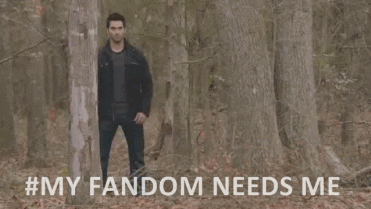
Similarly, a bit more recent example of fans coming together to show their support is in the Taylor Swift fandom [aka Swifties]. Taylor put it out on twitter that her record label Big Time Management [which she left sometime last year] was restricting her from performing her old songs at the American Music Awards where she is said to win ‘Artist of the Decade’ and that they’re keeping her from using her own music in her own documentary. She stated that she felt like she had no choice but to let the fans know before the AMAs, and since her tweet on November 14th she’s got more than 851.8k likes, Swifties got the hashtag #IStandWithTaylor trending worldwide and around 100k fans and others have signed a petition against Big Time Management.
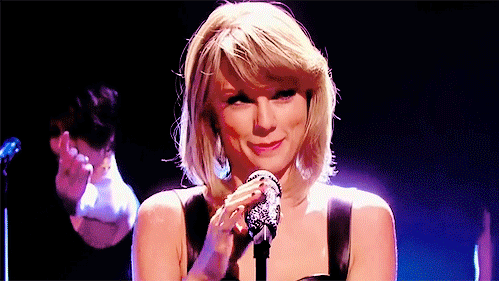
Fan audiences are described as “deeply engaged in their favorite media texts, fans often reinterpret media content and create their own cultural productions in response” (Sullivan, 2013, p193). With that understanding in mind there is also what is known as the ‘Continuum of Fandom’ which follows 4 types of fan and it understand them in different levels of involvement/passion.
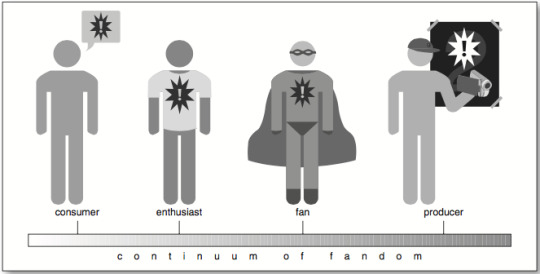
The first is a consumer and this is the passive level of fandom with the least involvement from the audiences’ side. I am a consumer of The Walking Dead because I watched it on Netflix but I didn’t grow any attachment to the show or its characters, but I still a watched the show making me a consumer (Professor Good, week 9, Nov 7th).
The next level is enthusiast. Here people begin to grow a greater connection to the media, they might go do more background research on characters or actors or begin look up topics with other fans (Professor Good, week 9, Nov 7th). How to Get Away with Murder was a show that my roommates and I really got into the first year and we would always watch it together and discuss it with other people on our floor and look up what other people were saying on social media
The next is fan. Fans will go into a deeper analysis of the media text and begin to interact with other fans on sites or platforms that are specific for that fandom (Professor Good, week 9, Nov 7th). For example, if you’re a fan of Sherlock you would go post and interact with other fans on Reddit in the subreddit on Sherlock or having a Tumblr specifically for Sherlock.
The last significant level on the continuum is producer who are considered the most active fan. Fan producers re-interpret the media text or some how work themselves into the narrative; this can be things like fan fiction, fan art, fan videos or even Filk songs which if you didn’t know is a mix between fiction and folk songs [an interesting idea, I know!]. It can also turn into a profession for the fan, for example, Anna Todd who started on Wattpad writing Harry Styles fan fiction ended up actually publishing the book and it then got turned into a movie early this year.

This week in lecture we discussed Henry Jenkins and the 9 types of participatory culture his book Textual Poachers: Television Fans and Participatory Culture. To simplify them into how I understand them with examples I talk about half of them in relation to fan fiction and fan culture and the other half Marvel Cinematic Universe
‘Recontextualization’, Jenkins describes it as short stories that are meant to fill in the gap in existing media texts, when fans are happy with the way a story ends they might write their own endings with what they prefer. For example, many fans rewrote or reimagined the Game of Thrones finale because the way it ended was superrrr unsatisfying.
‘Personalization’ which is famous in fan fictions where the writers or fans incorporate themselves into the story line alongside the characters. Some fan fiction has ‘Y/N’ [your name] in their stories which means whoever is reading it can read it as their name which personalizes the story to them.
Eroticization, where it explores a characters’ sexuality and sexual encounters that are not scene in the primary narrative. There’s a lot [A LOT!] of fan fiction written about Harry Styles and Louis Tomlinson [ship name: Larry] that write them to be a couple and eroticize them.
‘Genre shifting’ where the primary genre of the media will be shifted or changed into something different. For example, the original Sabrina the Teenage Witch show or the original comics and Netflix show The Chilling Adventures of Sabrina are based on the same story but they have two different genres. The original is more humour based and structured like a sitcom, where the new show takes a much darker and creepier take on the story.
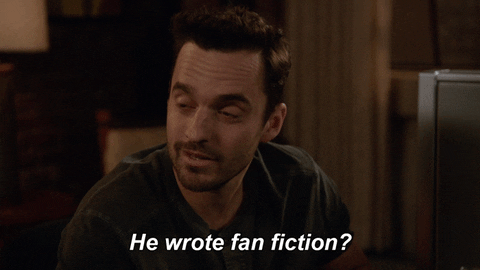
Arrow and The Flash [or lots of the MCU television shows can be listed as an example for 4 of the 10 concepts Jenkins discusses. ‘Expanding the timeline’ where it can explore the character background or rewrites unpopular endings; Arrow started to have flashbacks in an attempt to explain why Oliver Queen [Green Arrow] ended up how he is now, also by expanding the timeline they were able to bring in new characters like The Flash into the story line.
‘Crossovers’ where in which boundaries are blurred between two media texts in a way to introduce character from one text into the other. Arrow and The Flash are two shows that have now had several different crossovers where characters from one will often appear in the other, they’ve also done crossovers with Supergirl and Legends of Tomorrow where characters from all 4 shows interact with each other.
Refocalization’, this allows of the focus to shift away from central characters to focus on secondary or minor character. The Flash even though is technically centered around Barry Allen; the last couple seasons offer central plot lines for some of their secondary characters like Caitlin Snow or Cisco Ramon.
‘Moral realignment’ it inverts the moral universe of the original narrative depending on how you look at it, the Green Arrow could be a ‘villain’ because of he is considered a vigilante who takes always takes matters into his own hands and often disobeys law enforcements. This is kind of like Robin Hood basically, so is taking from the rich and giving to the poor morally justified or just wrong.
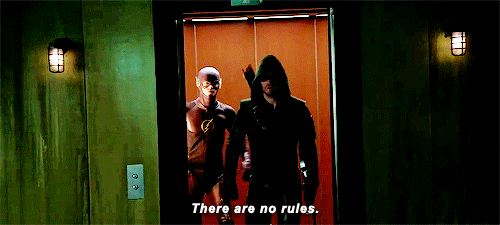
0 notes
Text
Week 10
Ah the online world! It’s a wild wild place where honestly anything can happen. One of the first viral video that I remember watching the ‘Charlie bit my finger’ video that I think most of us know – if you haven’t seen it where have you been???
youtube
But before the online world came to be its hard to imagine a platform where one video can be viewed and shared by millions of strangers all across the world. The advancements in technology and the digital age has lead to a point in time where movies, tv series, music, books are all blending into one another and are now compatible with each other, this process is called convergence, it allows for the media content to be viewed on multiple different devices and has allowed the reproduction of content (Sullivan, 2013, p216). A really good example of media convergence is comic books – there are multiple comic books that has been reproduced into movies, tv shows, video games. Like Spider Man who first made his first comic book debut in 1962 but since then has been converged into movies, animations, video games etc.

Also due to the advancements in technology there is the trend of audience fragmentation, this is the idea that audiences are being divided into smaller groups because of the increasing amounts of media channels or streaming services that are able (Sullivan, 2013, p217). Sullivan argues that audience fragmentation is threatening audience measurements since audiences are spread across so many different platforms it’s hard to get an accurate sample of the viewers of one specific platform.
This is also what Adrian Athique writes in his article where he mentions that new data techniques need to be looked at in relation to the gap between audience data and the audience themselves (Athique, 2018, 60). Through his research he’s found that the new audience formations over multiple platforms over the internet means that researchers are increasingly studying data on audiences rather than the audiences themselves (Athique, 2018, p71-72).

Another key trend due to digitalization is audience autonomy which basically means that the characteristics of typical media settings like its mobility, to the ease of access, to the ability for user generated content all enhance the audience experience within a specific media consumption (Sullivan, 2013, 217). Because of an increased control given to audience members with streaming services like Netflix, we are becoming more independent and start to stray away from traditional forms of media. Fans of the DC Universe have shows like The Flash, Arrow, Supergirl that run on the CW but also regularly updated on Netflix too. Which means that even if they don’t have cable or access to the CWs channel there are still able to watch the shows with ease.

User-generated content is a huge part of why audience members love the digital media world and it is an essential part of so many superhero movies and shows, it can include a variety viral content, parodies, fan fiction, fan videos, comic con and so many other types of fan content. Sullivan writes user-generated content as “media that corporations are providing consumers the means to create, store, and distribute content that are designed by users themselves” (Sullivan, 2013, p217). This allows audiences’ to not only watch narratives but to also participate and create their own narrative content; the superhero industry like Marvel or DC are big players in user-generated content as well as participatory culture. YouTube is a big platform for user-generated content – fan accounts are able to post content about Marvel like reactions, fan trailers, theories etc. on the one platform
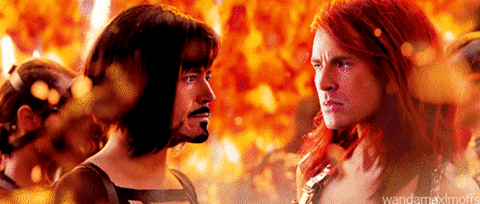
Participatory culture similar to user-generated content is “where fans and other consumers are invited to actively participate in the creation and circulation of new content” (Sullivan, 2013, p219). All Marvel movies are part of comic con and that in itself is one of the biggest forms of participatory culture/user-generated content that there is today. Comic-con allows fans to engage with the content that they watch or enjoy in such a real way – you aren’t simply just posting a video to YouTube or putting up a blog post, it’s dressing up in character, meeting the casts of the shows that you love, interacting with other audience members.
Here’s a video for ‘Best Marvel Cosplay’ contest from the 2019 comic-con [it’s 34 minutes long so if you have 34 minutes to spare feel free to watch the whole thing! but all in all these fans have put in so much time and effort into creating these cosplays] One of the biggest success of user-generated content is the increase in audience interactions with the brand itself, industries like Marvel with its convergence of comic books, movies, TV shows, video games etc. creates a bond between the brand and the audience.
youtube
However, Professor Good brought up whether the creation of YouTube means an end to the ‘audience’ as there is flexibility between who are the producers and consumers because on YouTube everyone can be both! (Professor Good, week 10, Nov 14th) and because sites like YouTube or Tumblr reply on having audiences to actually post for it to run effectively it makes the audience an essential part of the media production process (Sullivan, 2013, p232). If fans and audiences are such a huge part of production it brings the question posed in class by Professor Good about who really has the power in this new digital age is it the audiences or the larger industries? – Marvel and other big companies count on fan participation for things like comic-con so is this simply the commodification of fan culture or do they have these in order to create more interactive fan experience?

I would like to think that the audiences hold the power in most media consumption because events like comic-con only run because thousands of fans show up every year which means the big industry is obviously doing something right. The audience holds the power because if you don’t want to consume that media event, you don’t have to go. That’s putting it pretty simply though! Clearly there are ways in which the large companies have the majority power where the production of media never really ends whether its targeted ads or releasing Disney + when you already have Netflix and are a struggling student who wants both [its me, I’m the student].

0 notes
Text
Week 11
Unfortunately, this is the end of 11 weeks of blogging. If you somehow managed to stick around and enjoyed learning about audiences with me, it has been quite the journey and learning experience.
Here’s how I feel about all this ending:
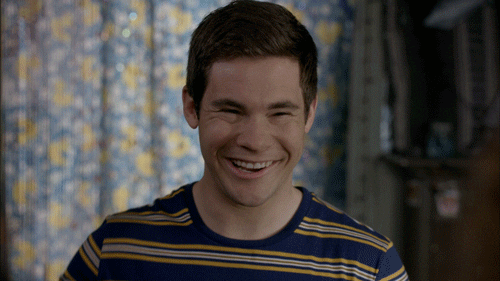
ANYWAYS - as we discussed in last week we are in the media world is linked together by the digitalization and convergence of media technologies, it’s these trends in technology that shapes the way we look at audiences right now. Henry Jenkins developed the term transmedia production as the “coordinated use of multiple media platforms to craft a narrative” (Sullivan, 2013, p241), this means that storytelling moves from just one medium like TV, books, games it opens the narrative world to the possibility for higher audience engagement and interrelations with other media mediums. I’ve written about Transmedia a lot of classes in the last couple year and its always one of my favourite concepts because one of the biggest influences in transmedia is the comic book/superhero world which I am a big fan of to say the least.

Linking back to last weeks’ topic comic books are a great example of transmedia storytelling – it blends the narratives of the comic book medium into the film or television medium. Marvel movies like Avengers have been created first in comic book form and slowly through the years been integrated into the film industry by Marvel Studios. Transmedia is really good at including audience participation and because audiences in this day and age like to believe that we are agents in media, Sullivan says they want to “create their own venues for sharing their views; they even want to influence the development of the program” (Sullivan, 2012, p241).

In lecture we examined the pattern of the ‘long tail’ in relation to the shift in the business of audience measurements as a result of audience fragmentation. So the run down for the ‘long tail’ method is that the ‘head’ is the media that is most consumed by audience members and the ‘tail’ is the rest of the audience attentions across smaller more ‘niche’ content (Sullivan, 2013, p243). With the increasing technological advancements, it means that the tail is getting longer compared to the head because audiences have so many different platforms and methods to get their data from. Obviously, the head for the superhero industry in this scenario will be quite big because fans still want to view the most popular content like the Avengers but the tail is also growing because sites like Netflix have smaller TV series like Agents of S.H.E.I.D or The Defenders, smaller Marvel content which would be at the tail end.
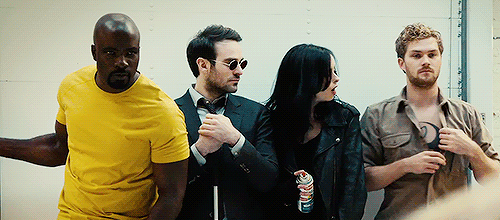
[not a random gif! it’s the cast of The Defenders]
The idea of the audience is becoming increasingly independent and furthering away of what Sullivan calls “institutional communicators” like cable or newspapers, and because of the huge change to the meaning of ‘audience’ it is extremely important to understand the shift in boundaries between the media text and its audiences (Sullivan, 2013, p245). Sonia Livingstone in this week’s article mentions the theory of mediatisation “a historical process whereby communication media become in some respect more ‘important’ in expanding areas of life and society” (Livingstone, 2019, p174). Which is kind of sad to think of but its true, most of our life and who we are as an audience is located in our phones or laptops. It’s the media that’s around us.
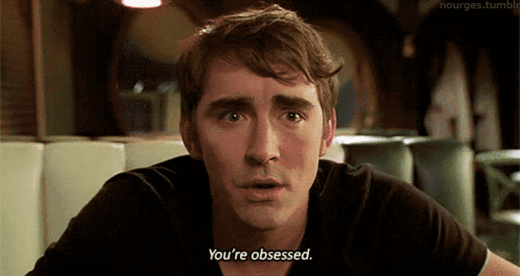
Overall, I think there is a huge shift in what it means to be an audience member through the years. It’s quite the timeline that we’ve built in this course – it started with small groups of loud talkative people sitting around a fire listening to stories [week 2], but from the slow growth of the printing press [week 4] it started giving a voice to the people, then public voting where the audiences’ voice mattered [week 5] and finally to now with the advancements of technology there are multiple different ways that we are a part of an audience.

It’s been a tiring yet fun journey writing these blogs, I don’t know when you’ll be hearing from me again but until then, GOODBYE!!!
0 notes
Text
Week 1
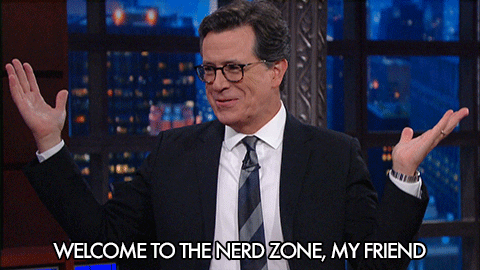
For me, I’ve generally always thought about the idea of an audience in the sense of a concert, a theatre performance, or a movie when you are in a large crowd of people all experiencing the same thing. Something that is more information-based as Sullivan puts it, which the simple idea of a sender sending out the information and the receiver receives it. So when Professor Good asked us about the concept of being an audience member my first idea was all of us sitting in lecture; we had a professor on one end giving us information and the students on the other side receiving said information.
Then in the lecture, we described and discussed how an audience as “situated role that people temporality performs and in their performance people produce representation of audiences" (Butsch in Sullivan, 2013). We also discussed in this week’s lecture that you are a part of an audience in so many different situations that you might not even think about. In another class that I am doing this semester we discussed advertising and how it’s pretty much everywhere you look, it got me thinking that every time we look at or read an advertisement we become an immediately become an audience to that whether we want to or not. The world is so full of content that is being pushed onto you there really is no getting away from being an audience to them.

As someone who watches a lot of TV shows [and I mean a lot, I might have a problem], I started to think about where you stand as an audience in the setting of laying in bed, watching television shows on your own. With every show that you watch you have different reactions and different emotions to them, and I think that is something that scriptwriters of shows often think about while creating new scenes. How is this scene supposed to affect the audiences that are viewing it? Different genres of television evoke a different sense of emotion within me, a show like Dark on Netflix [I highly recommend] is most likely going to keep me on the edge of my seat [AKA: bed] but watching Greys Anatomy frankly had me crying quite a bit.

So for me, I think that makes television somewhat more of a meaning-based view which “regards the meaning-making activity of the receiver(s) as much more significant than the transmission of the model itself.” Sullivan also mentions that in this model the aspect of getting feedback between the sender and receiver is important (Sullivan, pg.3).” Many television shows runners receive feedback from their audience which allows them to see how the audience is feeling about said show. Sullivan writes about how a form of feedback received by producers was from third parties like Nielsen who would give ratings and public opinion polls. With the rise of the digital age many audience members are on Twitter, Reddit, Tumblr etc. sharing their opinions or theories of the show – this way showrunners are able to receive the feedback essentially for free.
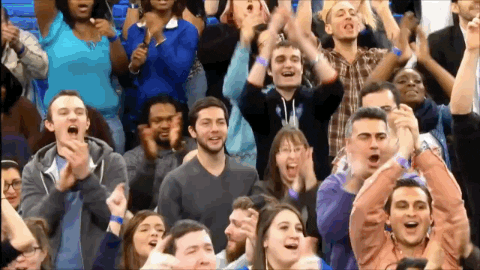
and that’s that for week 1! See you next time!
0 notes
Text
Week 2
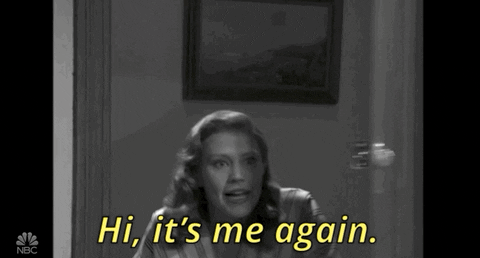
I’m going to start this week off by introducing James G. Webster who argued the Three Models of the Audience and it begins with the ‘audience as outcome,’ which is the idea that “people as being acted upon by the media.” He goes on to talk about how this created concerns for the power that media had over its audiences (Webster as quoted in Sullivan, pg.6). This can be linked to the idea of structure and agency according to the textbook, structure in this context is the ‘social behaviour or interactions between groups of people that are essentially being passed down generations over-time most likely through an institutional form such as churches or governments’ (Sullivan, pg.16). This makes a lot of sense because imagine back in the day [or some really really remote town now] that only has one form of news media that they get, whoever is writing or putting that news together has the power to change the minds and views of everyone in that specific place.
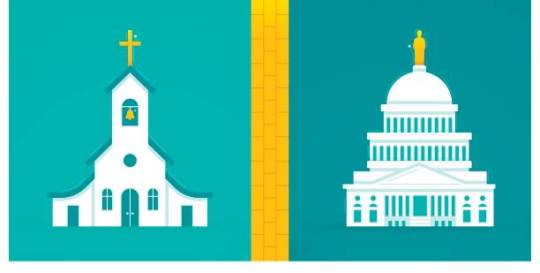
When audiences are the outcome they are being shaped by the media that is around them but ‘power’ isn’t necessarily a bad thing [always got to look at the bright side, right?]. The printing press was one of the earliest forms of media that altered the relationship between audience and content, the printing press was something that finally gave a voice and the power to the people [yay people!]. So now it wasn’t just the churches and other institutional platforms that were conducting what to do or say, everyday people, got a chance to write and share their own views (Professor Good, week 2, Sept 12).
Okay, lets get back to Webster’s model, the second model he writes about is the ‘audience as mass’, this model looks at audience as a “large collection of people scattered across time and space who act autonomously and have little or no immediate knowledge of one another” (Webster as quoted in Sullivan, pg.6). So basically audiences are linked together by common media that they are being exposed to but have no idea who the other is, an example that came to mind is again the news media. Every morning before work, my dad watches the exact same news channel and then again in the evening when he’s back from work and this isn’t just my dad. Thousands, if not millions of people do the exact same and are all getting the same content across the world and don’t have any knowledge of each other. This is an example of the audience as mass because when you’re watching a news channel, yes, you can pick what channel you want to watch but you have no control over what information comes from that channel.
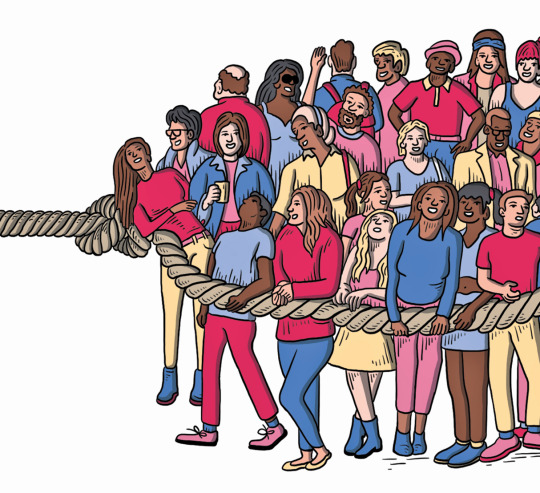
The next and final model that Webster goes on to discuss is ‘audience as agents,’ in this model “people are conceived of as free agents choosing what media they will consume, bringing their own interpretive skills…making their own meaning…” (Webster as quoted in Sullivan, pg.6). I wanted to talk about how TV shows and streaming services are a great example of how audiences are agents, and instead of people being acted upon by the media, the media is acted upon by the people. Television shows are something that is super subjective and is something that audiences choose to consume [unless your friend is forcing you to watch The Bachelor, again]. How audiences react can change based on their personal experiences or feelings and we can create our own meanings and interpret it differently because not everyone is going to have the same reactions to watching a show as the next person.
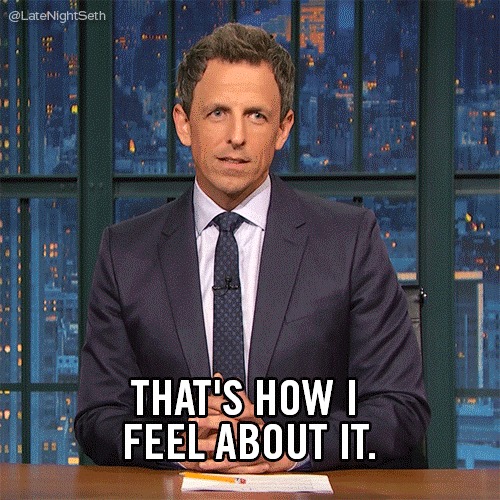
There is such a difference in the generations when you think about in terms of advancements in technology. Sometimes when I’m around my grandma I think about how much the world around her has changed in her lifetime, from flat-screen TVs to smartphones to the latest movies in cinema; during her youth, the idea of ‘audience’ was likely much more different compared to what it is now. In lecture this week Professor Good spoke about how to make sense of audience through history and first aspect discussed was size. Way back when it was mainly an oral-based society – there wasn’t any microphones or speakers so smaller audiences had to gather together to hear and smaller audiences were mediated compared to larger audiences. One of the biggest problems with size was the danger that came with crowds, during the Greek audience period the crowd was said to be ‘talkative and unruly’ and would disrupt the performances by shouting and speaking but this was because it was believed that the audiences had a right to judge and comment on performances.

However, during the 17th and 18th centuries, there was a shift into a quieter audience but as the textbook describes the audience discourse was linked to race and class. Then as the 20th century rolled the idea of ‘audience rights’ was also known as poor manners, and there was a distinction between the higher class audiences and the lower class. So the idea of ‘audience’ has changed quite a lot during the last couple centuries; from loud to quiet, back to loud and I guess right now it’s somewhere in between. It’s basically a rule that talking and going on your phone in the cinema is a big no-no, and in that setting, audiences are supposed to be quiet and just enjoy the movie. However, in a setting like a stand-up comedy show, it’s not questionable for the audience to be loud with laughter and commentary.
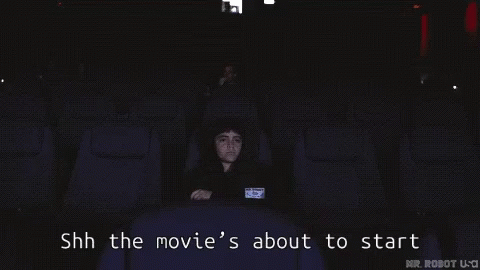
Before I close off this week’s blog post, I wanted to briefly discuss Sonia Livingstone’s article on ‘Giving People a Voice’ because I’ve never personally thought about how an interview is a huge platform to give the people a voice. She mentions that a powerful audience member is one who is asked about their experiences and is the people who have a chance to give their opinions on something (Livingstone, 2010).
0 notes
Text
Week 3
Professor Good started this week with discussing ‘our old brain,’ and what was vital for us if we wanted to survive way [way way] back when, and I’ll be honest, I was confused. We discussed what the functions of the brain were thousands of years ago, and here are some of the things the class bought up: food, water, shelter, weather changes and so all of this linked into the one aspect of survival, because at the end of the day they only had to think about staying alive. While Professor Good was talking about survival all I could think about is how is any of this linked to audiences, but as the lecture went on and I read the textbook things started to fall into place.
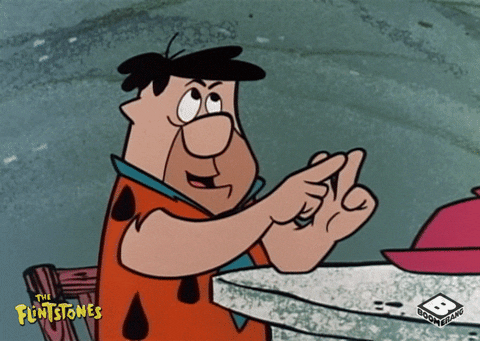
Sullivan talks about Charles Horton Cooley who was one of the first individuals to “link the development of individual’s psyches and world views with (a) their immediate surroundings, including social feedback from peers, parents, and other authority figures, and (b) messages carried by communications media via print, telegraph, telephones etc.” (Sullivan, 2013, pg27). So our development in both who we are and what we believe in is linked to the way we grow up, what we grow up around, and the messages that are carried out by the media surrounding us. I think it’s changing quite a bit these days but most of the time children have the same views as their parents because they were raised a certain way.
However, Cooley also looks into how with the increase in technology and new forms of media communication it lowers the barriers of information which in turn lets individuals create their own opinions and interests (Sullivan, 2013, pg.27). Especially nowadays when the media is quite literally at the tip of our fingers, anyone can look up the information that they want and make up their own opinions on it, but at the same time, their opinions might be coming from pre-conceived notions that have been put there by their surrounding. So baby boomers are likely to have different opinions compared to millennials and it changes with gen z and so on.

So this idea can be linked with the Dependency Theory which was argued by Sandra Ball-Rokeach and Melvin DeFleur in 1976. Ball-Rokeach and DeFleur wanted to study the effects that mass media has on audiences and how audiences interact with the media itself, they argue that audiences usually develop a sort of dependency on the media they consume to satisfy their needs. As we discussed in lecture, the higher the degree of structural stability of values for the audience members the more dependent they will be on said media, and because of this lots of people have access to the media and large audiences come together to consumer the stories (Professor Good, week 3, Sept 19th).
A way to look at dependency theory is how people are highly dependent on social media platforms as their news sites, it gives audiences a high sense of ‘structural stability’ and it’s where people get so much of their information that can link them to the world. For example, if there is an emergency happening the news is most likely the first media people will turn to, whether it be a news channel on television or simply on their twitter on their phones. People are extremely dependent on this to receive the information that they need. Something that came to mind for me, is when the stabbing incident happened at Brock last year, everyone was trying to get new information online through a news channel on twitter, facebook, etc.

Slowly switching gears, I want to talk about William J. Brown’s article about the idea of personae. Two of the definitions that he gives that stuck with me is “a person’s perceived or evident personality, like that of a well-known official, actor, or celebrity; personal image; public role” (Brown, W. 2015) because I think at one point a ‘personae’ or role model was usually an actor or celebrity that was well-known. The second definition is “personae can be a real person or a fictional character encountered through any form of mediated interaction” (Brown, W. 2015), I think this is something that can be related to more now than before because with platforms like YouTube or Instagram you can become a ‘personae’ on there, a character from a book or comic book are examples of ‘personae’s’ that people look up to.
The next part of this blog post I want to discuss the 4 processes of audience involvement with media personae as discussed in the reading and lecture.
(1) ‘Transportation’, so someone who is highly transported “is cognitively and emotionally involved in the story,” they continue with the idea of transportation is the audience member is both involved in the story and the characters included in the story as well. This argument of a transported audience member first began with the focus on written fiction and its audience but has now moved into all forms of media including television, movies, radio etc. (Green in Brown, 2015). An example of a highly transported audience that came to mind for me is the Marvel fandom because if you’re a big fan of Marvel content you are involved in not only their movies and television shows but the comics as well. There’s also so many comic books, movies, and television shows that it’s hard not to get attached to characters and storylines when you’ve kept up with them for so long.
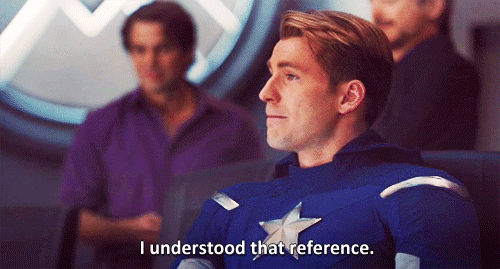
(2) ‘Parasocial Interaction’ which was first described by Horton and Wohl in 1956 as “imaginary interaction between a television viewer and a television personality, which over time may develop into a self-defined one-way relationship” (Horton and Wohl in Brown, 2015). The number one example of this type of ‘attachment’ that comes to mind for me is for YouTubers more specifically vloggers. Lots of the time when you’re watching vlogs of someone that you’ve been subscribed to for a long time you begin to feel like you know the person; especially vloggers because they basically record their day-to-day life but it’s a pretty one-sided relationship because I don’t think they know all however million of their subscribers.

(3) Identification which was argued as a “process of social influence”, “the internalization of the attitudes, beliefs, and values of the object of identification by the person being influenced” (Kelman in Brown, 2015). This can be related to celebrities because lots of the time if someone looks up to a certain celebrity, they would want to be more similar to them and would, in turn, adopt their beliefs and attitudes. For example, if a celebrity talks about or is an activist, for example, veganism, that might have an influence over his or her fans.
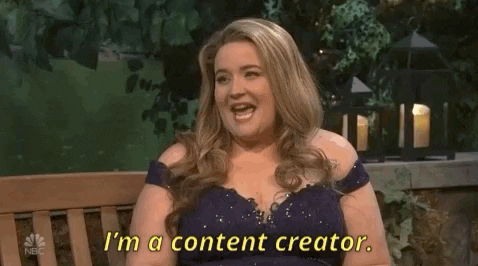
(4) Worship which is when an individual treats or gives a celebrity “the status of God, a god, or some other form of deity” (Maltby et al. in Brown). There are 3 levels of worship that the reading goes into, a low-level has its focus on “entertainment-social values,” this could be just following a celebrity that you like on social media and keeping up with their lives like that. A medium level of worship moves to where the individual feels like they know the celebrity and has personal feelings towards them, for example, I’ve seen people on twitter photoshop pictures of them with the celebrity to make it look like they’re ‘dating.’ The third level of worship is when an individual has such a deep fixation on a celebrity where they would do anything for them, like Taylor Swifts’ fan gone stalker who broke into her house just to take a shower and sleep in her bed.

0 notes
Text
Week 4
Another week, another blog!

This week we’re going to be talking about public opinion and how audience is measured, when I think about measuring audiences my first thought is the census that basically collects all your data but as we learnt some problems come with the public opinion. In the beginning, there was the ‘bourgeois of the public sphere’ which was spaces where individuals came together to essentially, talk, this could mean places like salons, coffeehouses. It was in the 16th century that the printing press made way for the public sphere and gave the people a voice in the public, the press “made publics by opening up the affairs of state to citizens who had no other way of knowing” (Sullivan, p. 60) by doing this they gave the public an opinion and the public is important because it brought people with the same values together. I would say the idea of the public sphere has changed over the past few centuries and there are multiple ideas of what or where a public sphere is. For me just sitting in a seminar is an example of a public sphere because it's a group of people coming together to discuss their opinions on a certain topic.
Plato argued that there were 2 types of thinking Doxa and Episteme, Doxa refers to an opinion that is fickle and changing and Episteme is knowledge that can be informed by scientific fact. Plato way of thinking argued that the public had the powers to make decisions based on doxa but he doubted that the common people had the wisdom (episteme) to make the right decisions. Keeping these 2 ideas in mind I wanted to talk about ‘The Central Park Five’ as I just watched it on Netflix and is based on true events; an assault and rape case that happened in 1989.
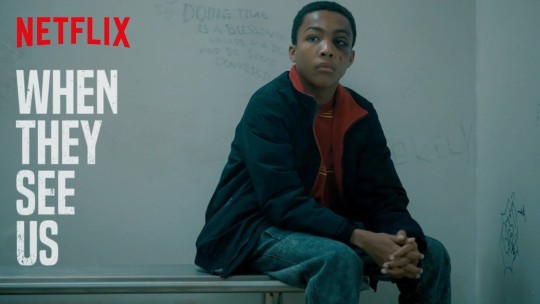
The Doxa and the public opinion when it came to this case and the trial about these 5 boys were highly regarding their race, 4 out of the 5 boys were African American and the other Hispanic American and the victim was a white woman which drastically changed the public opinion during the trials. The public opinion was further pushed negatively when Donald Trump came into the picture and wrote how the Central Park Five were guilty and should not have been freed.
The Episteme of this case is that the victim was assaulted and raped in Central Park, the confessions of the boys came after rough police investigations, none of the DNA found at the crime scene matched any of the boys, Matias Reyes a convicted rapist confessed to the crime and his DNA was found at the scene. This goes to show that despite the episteme and having scientific evidence that proved the 5 boys were innocent, the majority of the public opinion stayed the same. (BBC, 2019)
Neubaum and Krämer’s article ‘What Do We Fear? Expected Sanctions for Expressing Minority Opinions in Offline and Online Communication’ discusses their research on how situational factors can influence an individuals’ ability to express their viewpoints if their opinion is in the minority (Neubaum & Krämer, 2018). We can look at this in relation to the Central Park Five as some people might have felt uncomfortable with voicing their true opinions about the case if they were surrounded by individuals who believed that they were guilty.
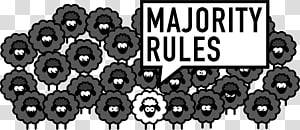
Neubaum & Krämer also discuss the spiral of silence which is the idea that individuals are social beings who ultimately want to fit in, and we use the media to tell us what to think and are hesitant to voice opinions if it does not match the majority of the public. Through their research Neubaum and Krämer found that the fear of being personally attacked is one reason why people are more willing to voice opinions offline rather than online, and they also discovered that users commonly have a following of a certain criteria and are likely to hold back their opinion if they feel like they would lose their audience. Which takes us back to why opinion polling can be wrong and lead to false data, not everyone is willing, to be honest in their opinions if it is in the minority or if they have something to lose (Neubaum & Krämer, 2018).
Moving back in time, in the 19th century, public opinion was quantified and it changed the idea of what it meant was meant by ‘public,’ the rise of quantification meant that the public was the “majority as measured by numerical counts” (Sullivan, p. 61). Straw polls are the quantitative form of opinion polling and they consist of a survey in which the popularity of something is recognized. As discussed in lecture, Sullivan argues that there is power in voting as it gives people opinion and a choice but the idea of random sampling sends the power shift back down because it means turning people in numbers. (Sullivan, p. 63).

I read an article published in The Guardian this week, that said ‘the polling industry doesn’t measure public opinion but produces it.’ The article goes on to discuss how in 1947 researcher tested the American public opinion on the ‘Metallic Metals Act,’ which I’m sorry to say was not a real thing. However, the research found that 70% of respondents took a strong position for or against even without knowing what they were voting for. Researchers found that most of the time individuals make decisions based on the conditions that they’re in, being under pressure to have a specific opinion on something can lead to false choices. Interviews or surveys do not have the same real-life conditions in which public opinions are made, but they design and produce quantifiable opinions (The Guardian, 2019). Which is similar to political polling; people can say that they’re voting for a specific party based on who is asking, the people around them, the amount of knowledge they have but all of this can change when it’s time to actually vote.
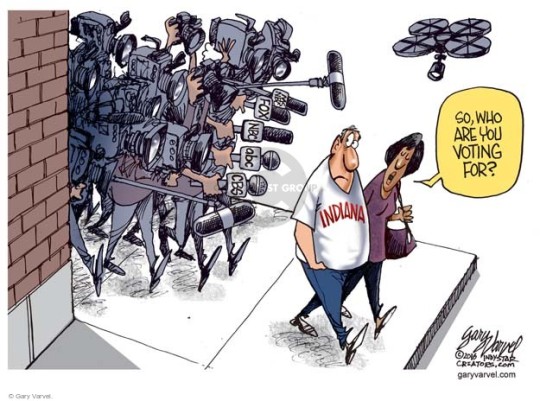
See ya next week!
0 notes
Text
Week #5
Hello and welcome back!
In week 2 we looked at how audiences are ‘agents’ which means that audiences are “free agents choosing what media they will consume, bringing their own interpretive skills…making their own meaning…” (Webster as quoted in Sullivan, 2013, pg.6), but this week we are going to be looking at the other side of that and thinking about the audience as ‘objects.’ This argument says the Doxa matters but whose Doxa is it actually? I would buy things like, yes, I totally needed that 2 for $2 french onion dip but did I buy it only because it was the first thing I saw when I walked into the Sobeys and because it was on sale or did I really need 2 tubs of dip (I didn’t).
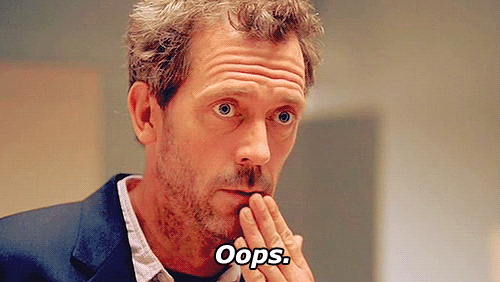
Opinions are changing and can be affected by multiple different aspects like agenda setting and framing and as Professor Good discussed in the lecture on October 3rd, audiences can be looked at as ‘institutional constructions’ that are affected by media ratings and target marketing. Sullivan gives the example of Wal-Mart and how they collect customer information and use it so understand what their customers are purchasing, in which stores, and in what quantities. This goes on to say that the ‘concentration of information’ is a powerful tool that companies use in order to influence their consumers (Sullivan, 2013, pg.77-78). This leads us smoothly into Karan Buzzard’s article on ‘The Rise of Market Information Regimes and the Historical Development of Audience Ratings’ goes into discussion on just how Nielson gathered their data and how they provided information for advertisers to use and so they could have more control over the production and distribution process (Buzzard, 2015).
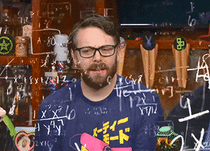
Vincent Mosco defined the political economy as the study “of the social relations, particularly the power relations, that mutually constitute the production, distribution, and consumptions of resources” (Mosco in Sullivan, 2013, pg78). In the lecture on Oct 3rd, we discussed the idea of audience as objects through a few questions (1) “What if our choices, as a result of target marketing, are not really our choices?” We touched on how ‘choice architecture’ and ‘nudging’ are unconscious ways that companies influence a consumers’ choice. An example of choice architecture is food outlets putting healthier food options in more prominent areas which makes it easier for individuals to get to. In another course this semester (3P55), we learnt that in the Google employee lunchroom they put the celery sticks and healthy food options closer to the front compared to other snacks where the employee would have to wait in line. This can be one way to look at how audiences are objects because what might seem as the persons own choice, might have been influenced by other factors, like not wanting to wait in line.

This can also go the other way with unhealthy options like my french onion dip situation because it was located at the front of the store it ‘nudged’ me into buying it even if I didn’t want or need it in the first place
The second question we are going to be discussing is ‘What if we are doing all the work? Even when we think we’re not’ [personally don’t want to be doing more work than I have to but we’ll see where this comes into play]. The political economy emphasises that the social and economic transformations that have happened since industrialisation and capitalism have changed the way we should look at production and consumption. Thomas Streeter said that this caused a divide between production – audiences being economically productive and consumption – the audiences’ leisure time (Streeter in Sullivan, 2013, p.80). Often when we’re going about our daily lives and we don’t realise the extent to which media producers are essentially using you advertise their own products. Sullivan also talks about how audience members perform labour for advertisers by viewing certain ads and what media producers value the most from audiences is their viewership (Sullivan, 2013, pg81).
This is how audiences are being used as a commodity, one example of this is how Netflix records the types of shows or movies that you are most likely to watch and gives you a recommended tab, however, the Netflix originals always have a bigger section to where they are advertised to us. So in this situation are audiences watching certain shows as leisure or are they unconsciously working to promote brands.
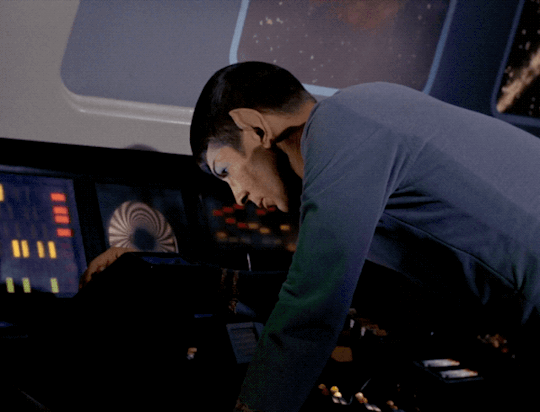
Yes, Spock they use for their own benefits and we don’t even realize. Anyways thanks for reading! See you for the next blog post!!
0 notes

